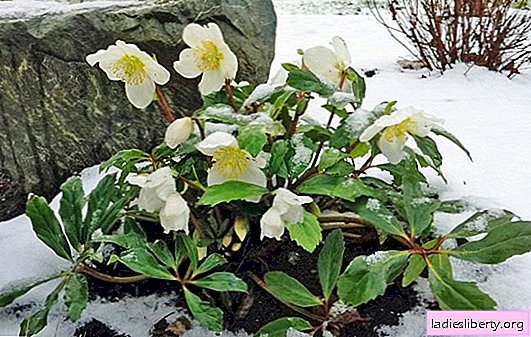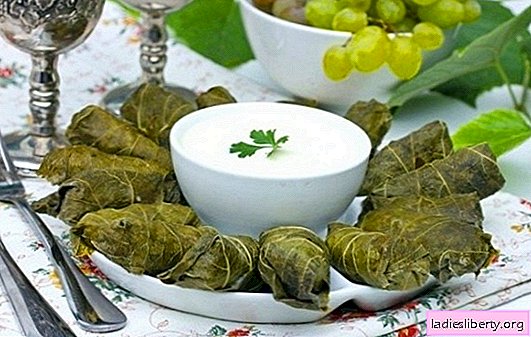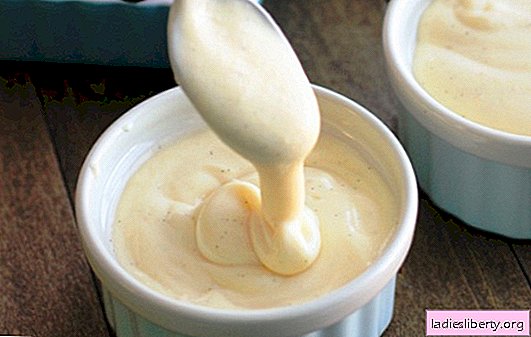
Moroznik belongs to perennial plants of the Lyutikov family. In nature, there are more than 25 species of this amazing flower. This ornamental plant blooms in winter or early spring. Hellebore flowers resemble lanterns of various colors.
All varieties of hellebore are frost-resistant and easily tolerate the harshest winters. Some species are available for cultivation even by non-professionals.
In the old days, hellebore was grown exclusively for medicinal purposes. The plant cleanses the body well and promotes weight loss. And plantings of a hellebore near the front door protected from the evil eye, damage and drove away evil spirits.
In Europe, you can find thickets of hellebore in the winter forest. When the flower beds are still covered with snow, an amazing flower pleases the eye.
We grow hellebore in the garden: planting a plant
When choosing a place to plant a flower, you need to remember that he does not like frequent transplants. In one place, hellebore grows up to 10 years.
The best place for the plant will be a clearing under the shade of trees and shrubs, where there is good soil. The flower prefers moist, well-drained soils. But it can grow on poorer soils.
Hellebore blooms begin in winter or early spring, when there are no leaves on the trees, and the plant receives enough light. In the summer, the crown shadow creates comfortable conditions for growth, and falling leaves increase soil fertility and nourish the flower.
Planting hellebore is carried out in pre-prepared holes, the distance between which should be about 30 cm. The pits are filled with mature compost, which allows you to grow a flower without additional fertilizers. In the first weeks after planting, the plant needs to be watered well. The best time for planting is spring, when the snow melts.
It is better to plant hellebore in groups that look spectacular against the backdrop of a snowy garden. The flower goes well with tulips and other bulbs.
How to care for hellebore
Hellebore is an unpretentious flower, care for which does not cause trouble. The plant is quite frost-resistant, therefore, does not require shelters. The only thing that hellebore does not like is stagnation of water in the soil.
Fertilizing has a good effect on the plant, flowering becomes more magnificent and long. Of fertilizers, it is better to give preference to organics, which are introduced in the spring. It is useful to mulch the soil around the flower with litter.
In the fall, hellebore must be carefully inspected for damage. All old and diseased leaves must be removed, which will prevent the spread of disease. It is not worth rushing to harvest dry inflorescences if you need to collect seeds.
Hellebore breeding
A flower propagates in several ways:
• dividing the bush during transplantation;
• seeds.
Most often, gardeners resort to a less laborious method - sowing seeds for seedlings.
We grow hellebore seedlings
Seedlings need to be grown immediately after collecting seeds. As a rule, they ripen in June. Seeds are sown in prepared soil to a depth of 1.5 cm. The seedlings will have to wait a long time, they will appear only in March next year.
Young seedlings need care. After the appearance of several pairs of leaves, they are dived onto a prepared bed in the shade of trees. In the flowerbed, they will grow for several more years. Three years later, hellebore seedlings can be transplanted to a permanent place, this must be done in April. The hellebore grown from seeds will bloom three years after planting in a permanent place. By that time, the plant will grow well and take root in a new place.
How to share an old hellebore bush
You can get the finished planting material by dividing the old hellebore bush. As a rule, propagate it in the spring, as soon as the plant fades. For division, bushes from the age of five years are suitable. Having dug up a suitable bush, its rhizome needs to be divided into several parts. Use sharp tools for work. All sections must be sprinkled with crushed coal.
Important! Some varieties of hellebore can be divided in the fall, for example, eastern hellebore.
Caring for hellebore after flowering: how to collect seeds, preparing for winter
After the plant fades, you need to collect seeds to avoid self-seeding. Seeds begin to ripen from the end of June, the process continues throughout the summer. Boxes of hellebore easily burst, and the seeds spill out onto the ground. In order to prevent this from happening, you need to tie still unripened boxes with a thin cloth. When the seeds fall on the fabric, they need to be dried at room temperature. It is better to store seeds in a paper bag.
Important! Hellebore seeds quickly lose their germination, so it is better to sow them immediately in the ground. Long storage leads to loss of quality.
How to care for hellebore in winter
Hellebore is a cold-resistant crop, but in snowless winters, and it can suffer. As a rule, only young immature plants freeze. Therefore, for the winter they should be well covered with leaves or covered with spruce branches.
Diseases and pests of hellebore
Often the plant suffers from attacks of snails and slugs, aphids and mice. They eat its leaves, the flower loses its appeal.
You can get rid of mice by spreading the bait around the landings. Various preparations are used from aphids and caterpillars, but snails will have to be destroyed mechanically, i.e. collected manually.
Pests spread various diseases that affect hellebore, so you must definitely destroy them.
1. Ring spotting hellebore.
Characteristic spots are noticeable on the leaves of hellebore, damaged parts lose their attractiveness. All diseased leaves are burned, and the flower is treated with fungicides.
2. Powdery mildew.
Young leaves stop developing on the affected plant, it lags behind in growth. Sick leaves are deformed, covered with dark spots and a gray coating. Affected plants are removed, and the site is treated.
In general, hellebore is very resistant to disease, only untidy plants that are grown under unacceptable conditions, for example, in too acidic soil, are affected.
Varieties and types of hellebore (photo)
• Black hellebore is the most common species found in the wild. The height of the bush reaches 30 cm, the flowers are large snowy white, tall peduncles. Flowering occurs in April and lasts up to two weeks. A plant with good winter hardiness, withstands frosts up to - 35 degrees. In floriculture, popular varieties of this hellebore are grown: Prex (blooms in November), Potters Will.

• Smelly hellebore forms green flowers on long peduncles, the height of which reaches 80 cm. This species tolerates not only severe frosts, but also is resistant to drought. A popular variety is Wester Flisk.

• Reddish hellebore - a plant with large shiny leaves. The flowers are purple-purple, drooping, have a very unpleasant smell, in the process of flowering change color to green. Blooms in April, flowering up to 10 days.

• The Caucasian hellebore blooms less attractively than other types of hellebore, but its foliage remains decorative even in winter. When planting in the garden, you need to remember that this type of hellebore is very toxic.
• Hybrid hellebore - combines several types of soda plants with a variety of colors. The most popular varieties: Violetta, Belinda, Queen of the Night.











